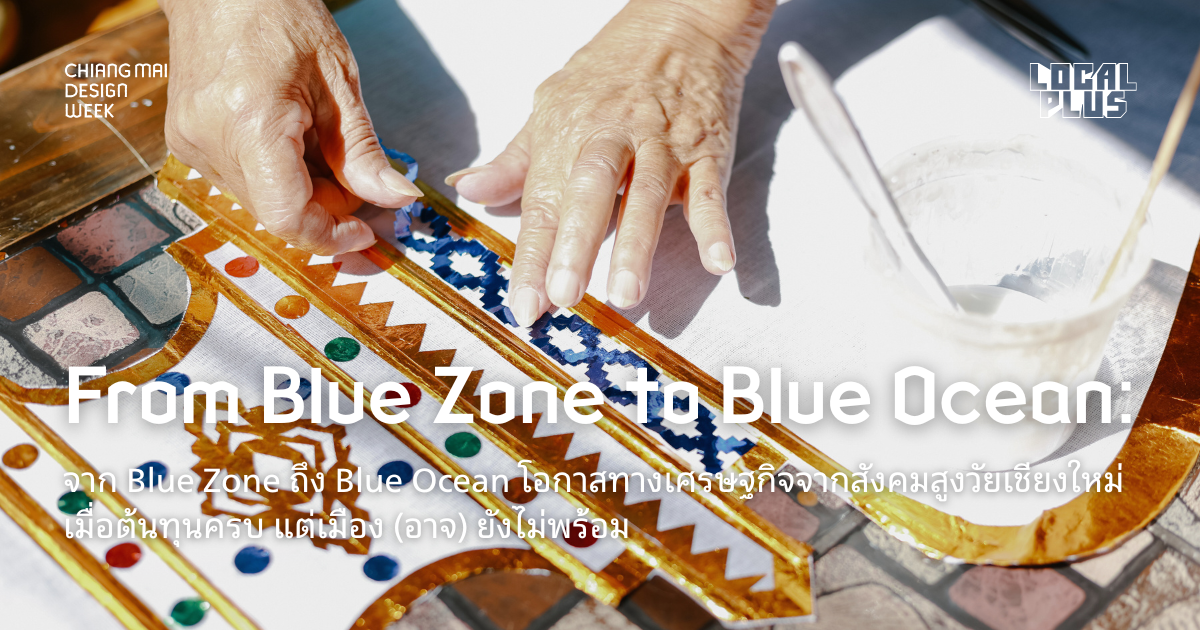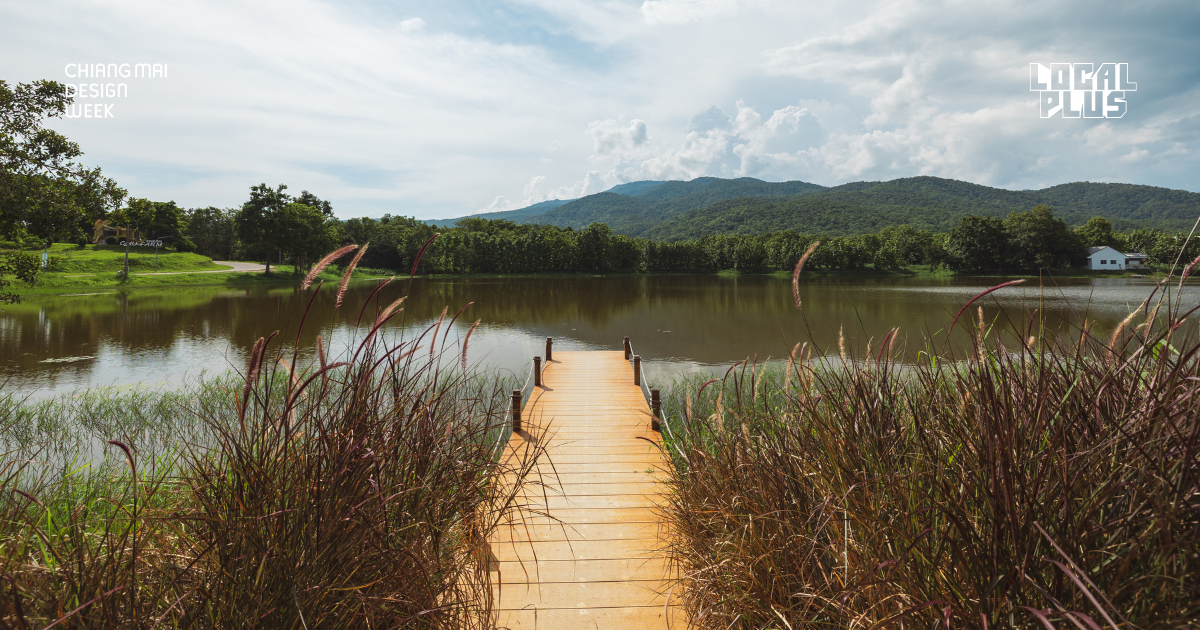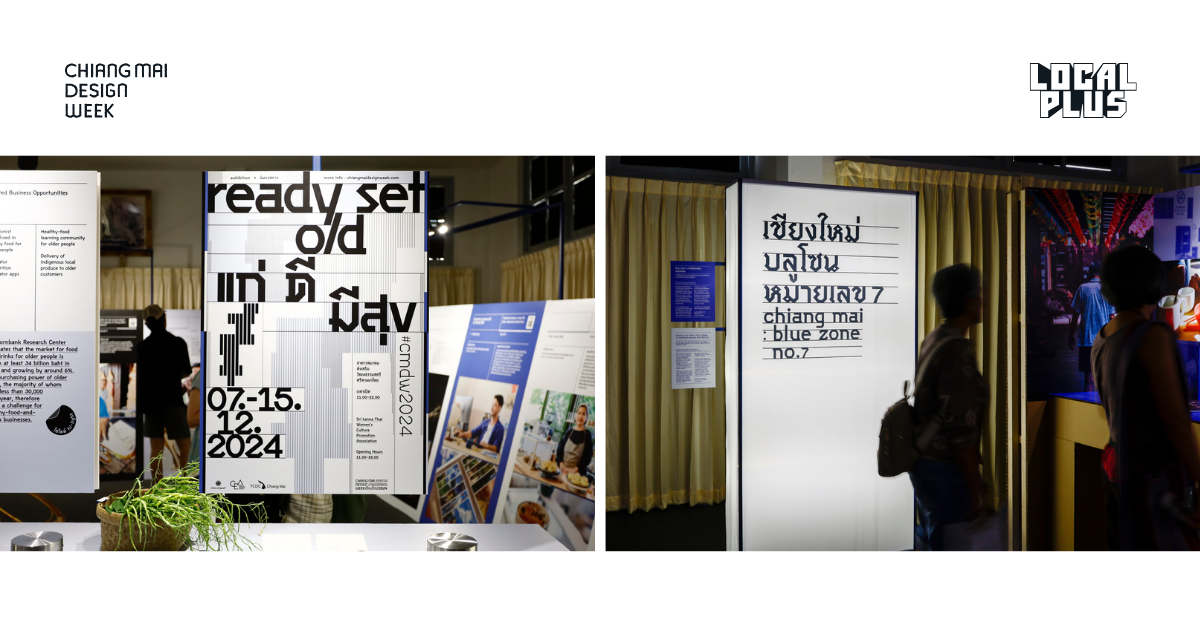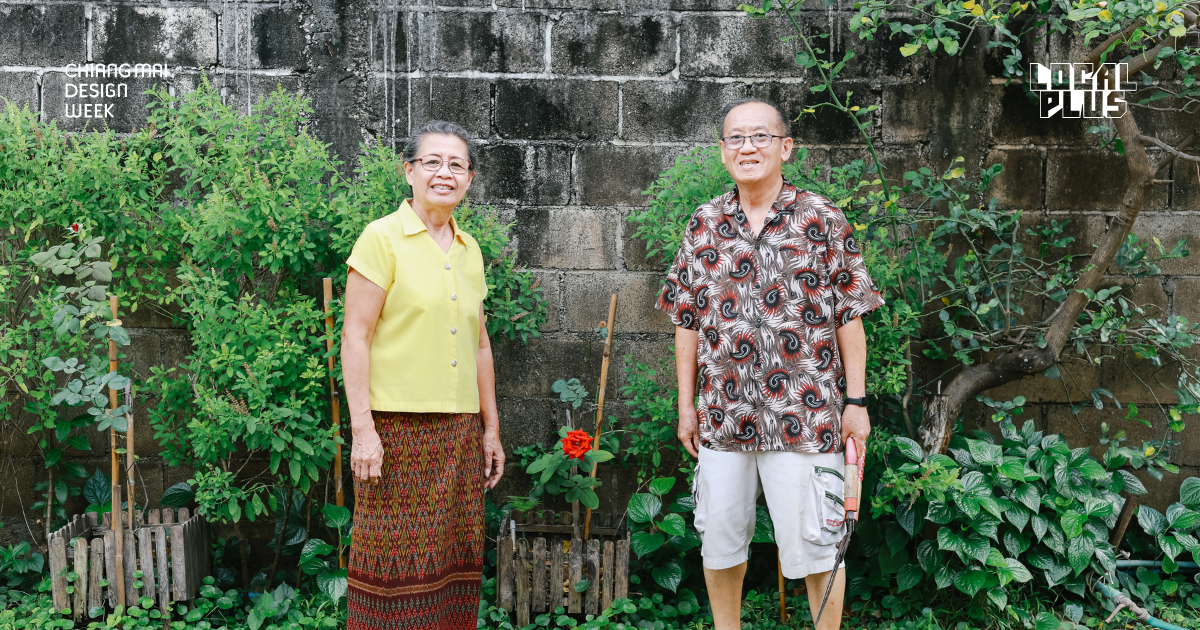From Blue Zone to Blue Ocean: Exploring Economic Opportunities in Chiang Mai

เผยแพร่เมื่อ 5 months ago
By 2035, Thailand will become the first developing nation to enter a super-aged society, with over 30% of the population aged 60+. Some areas, like Chiang Mai, are already there.
Chiang Mai—Thailand’s largest province by land area—now has 404,512 elderly residents (24.08% of its population) and 1,152 centenarians, the third highest in the country. This doesn’t include the many Western retirees who have made it their final home.
While this shift poses challenges for a service-driven city, it also opens economic possibilities.

Blue Zone: Where Sustainability Meets Longevity
In the early 2000s, Belgian demographer Dr. Michel Poulain and Italian epidemiologist Dr. Gianni Pes studied Barbagia, Sardinia, for its unusually high longevity. They marked it with a blue circle, leading to the term Blue Zone.
Their 2004 research was later expanded with journalist Dan Buettner, resulting in the Blue Zones book (2008). The term now refers to places where people live longer, healthier lives.
Six original Blue Zones include Okinawa (Japan), Sardinia (Italy), Nicoya (Costa Rica), Ikaria (Greece), Loma Linda (USA) and Singapore.
Buettner also identified six key factors of longevity: (1) purposeful living, (2) eating in moderation, (3) plant-based diets, (4) strong social/family ties, (5) spiritual or religious practice, and (6) restful, low-stress lifestyles. These depend not just on habits, but on city design, access to food, healthcare, and community life.
Return to Chiang Mai—where lush nature, vibrant culture, an easygoing rhythm, and nourishing local fare converge. Home to about 1,152 centenarians—the third‑highest count in Thailand—the city points to clear Blue Zone potential and presents a blue‑ocean landscape for fresh, well‑matched ventures.
Ready Set Old
At Chiang Mai Design Week 2024, the “Ready Set Old” exhibition invites visitors to explore the assets and readiness of Chiang Mai across various dimensions that support a high quality of life for the elderly.

At the same time, it highlights opportunities to develop the economy through careers that align with Blue Zone principles. These are presented through four key elements: access to diverse healthy foods (with potential for developing senior-focused health food businesses), daily routines that encourage natural movement (such as senior fitness trainers or wellness content creators), housing that supports multi-generational living (like holistic rehabilitation specialists or senior-friendly travel services), and a strong sense of purpose rooted in religion and cultural engagement (creating opportunities in cultural tourism and related careers).
While Blue Zone and Blue Ocean share the same color, their meanings differ. The first blue refers to longevity-friendly communities, while Blue Ocean describes untapped market spaces with little competition. Yet, when we view Chiang Mai’s resources as economic potential, we can envision a new Blue Ocean driven by aging demographics.
An Opportunity Still Unfulfilled?
The Ready Set Old exhibition not only showcased potential careers and businesses for an aging society, but also encouraged public reflection on Chiang Mai’s existing limitations.
Visitors voiced concerns over insufficient green space, air pollution, inadequate public transport, poor pedestrian infrastructure, and limited government support for senior welfare.
Although various policy proposals have been put forward—by Chiang Mai University’s Lifelong Education Institute or national ministries like the Ministry of Social Development and Human Security—there has yet to be a comprehensive, implemented plan to turn Chiang Mai into an aging-friendly economy.
“Actually, Chiang Mai has elderly spaces, but most are private and costly. Public ones are limited and under-promoted,” said Aunt Daeng – Narumon Klangwichian, a community leader from Phuak Taem. “Since our city is already fully aged, public activity spaces for seniors should be part of basic social welfare,” she emphasized.

Similarly, Aunt Nid – Wanida Intawong, a retired government official, added: “Although community life here supports senior well-being, if the city helps us turn this into income-generating opportunities, Chiang Mai would be even more livable.”
She also noted recent developments such as the Senior Wellness Center ( Chiang Mai University,) but also pointed out that access remains limited and costly. “The city needs to integrate these resources, making them low-cost or even free.”
These voices highlight the gaps the government must address—from infrastructure and service design to policy integration. If successful, Chiang Mai could become not just a model for healthy aging, but also a thriving, inclusive economy powered by seniors. And in doing so, it may not only become the seventh Blue Zone in the world—but also transform into a Blue Ocean, where aging is not a burden, but a driver of growth.
Ready Set Old Exhibition was held during 7th – 15th December, 2024 in Chiang Mai Design Week 2024 at TCDC Chiang Mai.
Sources:
https://www.ncbi.nlm.nih.gov/books/NBK298903/

